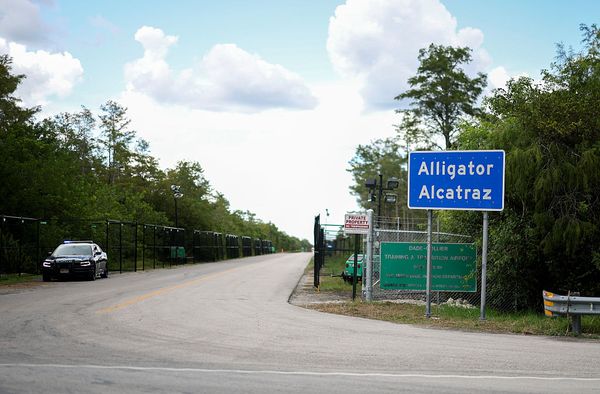Electric motorcycles don’t always have the best reputation among enthusiasts. Most of what we’ve seen in the mainstream has been utilitarian, commuter-focused scooters or small runabouts that trade away the emotion of riding for practicality and efficiency.
They’re often quiet to the point of sterile, designed to get you from A to B without much fuss. It’s a formula that works for city dwellers and delivery riders, but for those of us who live for the thrill of leaning into a corner or wringing out a bike on a straight, it feels like something important is missing.
To be fair, companies like Zero and Energica have tried to change that narrative. Zero’s models offer genuine performance wrapped in approachable packages, while Energica briefly showed us what an Italian take on electric speed could look like—before fading away, though there’s hope they may stage a return. Still, both of those brands build motorcycles that sit somewhere between practical and aspirational.
Lightfighter, on the other hand, is playing a different game entirely.
This is a manufacturer that isn’t interested in making commuters or all-rounders. Every motorcycle they build is a purpose-made race machine. The brand exists solely to push what electric performance can do on the track. For everyday riders like you or me, these bikes don’t even factor into the usual garage shopping list. But that’s the point. They’re proof of what happens when passion, engineering, and competition collide.
Take the Lightfighter V3-RS. At a glance, it looks like any other modern supersport with a sharp fairing, sculpted tank, and minimalist tail. But every inch of it is designed around its electric core. A custom chromoly tubular trellis chassis is at the heart, paired with a structural carbon fiber seat and tailframe. At the front, you’ve got Öhlins FGR 252 forks, and out back sits an Öhlins TTX36 shock. Braking is equally serious, with Brembo GP4-RX calipers and 320mm T-slotted rotors up front and a CNC-machined Supersport unit at the rear.

Underneath that aggressive bodywork lies the Parker GVM 210 interior permanent magnet motor, developed with Parker-Hannifin’s advanced division. It’s liquid-cooled, compact, and sits in a custom case with a 2:1 direct-drive reduction. Peak output is 154 horsepower, with 120 pound-feet of torque right off the shaft. Factor in the gearbox reduction and you’re looking at a monstrous 240 pound-feet at the rear wheel. Motor speed tops 11,000rpm, meaning it pulls hard and stays there.

Feeding it all is a rechargeable lithium-ion pack running automotive-grade NMC cells from Farasis Energy. Nominal voltage sits at 383V, peaking at 440V, with more than 300A of peak current available. The system is actively cooled and managed by in-house software, giving it the endurance to survive full race distance heat cycles.
Charging takes about an hour, which is quick enough for back-to-back track sessions. At 399 pounds ready to ride, with a 56.5-inch wheelbase, 24.5 degrees of rake, and just under 4 inches of trail, the V3-RS is sized and weighted like a modern middleweight superbike, only sharper.
Then there’s the V3-RH, the one built to go bar-to-bar in MotoAmerica’s Roland Sands Design Super Hooligan class. Unlike the faired RS, the RH wears its aggression openly. Number plates hang from the front, a nod to vintage AMA superbikes, while its exposed chassis and high bars scream attitude. Painted in bright orange with raw carbon and alloy accents, it looks like it was built to pick a fight. This is the one you’ll see competing with OrangeCat Racing, showing the Super Hooligan crowd what an EV can do against big-twin bruisers.


The RH runs the same Parker GVM 210 motor but tuned to 135 horsepower. Torque is identical at 120 pound-feet at the shaft, 240 pound-feet through the gearbox, with the same screaming 11,000rpm redline. The battery pack mirrors the RS, again using Farasis NMC cells and Lightfighter’s proven cooling and thermal management. Dimensions are nearly identical, though the RH tips the scales a little heavier at 410 pounds. It rolls on forged OZ Racing aluminum wheels shod with Dunlop Superbike slicks, while the RS gets Pirelli rubber. Both setups are designed for outright grip and precision, no compromise.
Styling-wise, the two bikes carry different personalities. The V3-RS looks every bit like the modern superbike it is, with smooth fairings wrapping the orange trellis frame and flowing into a sharp tail. It’s clean, technical, and clearly built for speed.
The V3-RH, by contrast, embraces its hooligan nameplate. From the bold number boards to the upright cockpit, it feels raw, muscular, and ready to scrap. Both designs communicate the same message, though: this is no science experiment. These are fully formed racebikes.
And that’s why Lightfighter is so interesting. These aren’t bikes you’ll likely ever buy for the street, and they’re not meant to be. But the fact they exist proves that electric technology can carry the soul of motorcycling, not just the function. It’s not about building the next delivery scooter or eco-commuter. It’s about building a machine that makes your heart race, whether you’re watching from the stands or gripping the bars yourself.

If history is any guide, what happens on the racetrack rarely stays there. Traction control, ride-by-wire throttles, lightweight alloys, and aerodynamic tricks all trickled down from competition bikes to the ones we ride every day. There’s no reason the same won’t happen with electric performance.
Lightfighter’s breakthroughs in battery cooling, torque delivery, and chassis integration could easily shape the EV sportbikes of tomorrow. And maybe, just maybe, that means we’ll one day have access to motorcycles that offer all the convenience of electric without losing any of the emotion that makes riding addictive.
For now, though, Lightfighter is carving out its niche in the purest way possible. By going racing. By proving that passion, when channeled into engineering, can build something truly badass.
Source: Lightfighter Racing








